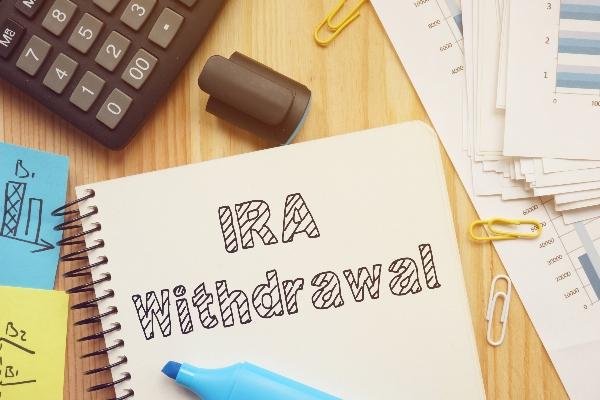Understanding mandatory retirement account withdrawals.
If you are approaching your seventies, get ready for required minimum distributions.
You may soon have to take RMDs, as they are called, from one or more of your retirement accounts.
You can now take some RMDs a bit later in life, which is good.
Recent rule changes give your invested savings a little more time to potentially grow in your retirement savings vehicles before that first required drawdown.
What account types require RMDs?
Any retirement plan sponsored by an employer, plus traditional Individual Retirement Arrangements (IRAs) and IRA-based retirement plans, such as SIMPLE IRAs and Simplified Employee Pension plans (SEPs). Original owners of Roth IRAs do not have to take RMDs.1
You can take your initial RMD from a retirement plan by December 31 of the calendar year in which you turn 72. You actually have the choice of taking that first annual RMD as late as April 1 of the following year, i.e., the year in which you will turn 73, but you’ll have to take your second RMD by December 31 of that same year. So, if you wait 16 months to take your first RMD, you will end up taking both your first and second RMDs from that account in the same year – and since each RMD represents taxable income, that could lead to higher-than-anticipated tax bill for that year.1
How are RMDs calculated?
The Internal Revenue Service provides calculation formulas in Publication 590-B. Commonly, you calculate your yearly RMD by dividing the balance of your retirement account on December 31 of the previous year by a life expectancy factor, a number you take from tables published within Publication 590-B.1
If you have multiple retirement accounts (as many of us do), each one will require an annual RMD calculation. If you own multiple traditional IRAs, you have the choice to calculate RMDs for each of those IRAs and take the combined RMD amounts for all three IRAs from just one of those IRAs. You have the same choice if you have multiple 403(b) plan accounts.1
What do you need to do to avoid penalties with RMDs?
The most important thing to do is to take them by the annual December 31 deadline. The second most important thing to do is to withdraw the right amount.
If you take an RMD after the December 31 deadline or withdraw less than you should, a penalty may apply. The I.R.S. may levy as much as a 50% tax on the amount not withdrawn.1
The good news is some investment firms will update you on your upcoming RMDs well in advance of annual deadlines, and your RMDs may even be calculated for you. This is not a given, however, and even when you receive such information, you must act on it, because it takes time to authorize and execute the RMD.
Lastly, take a look at how the RMD income may affect your taxes.
There are ways to manage the tax impact of RMDs, and you can explore those choices with a financial or tax professional.
Rich Ramsay may be reached at 651-429-3151 or rich@ramsaywealth.com.
This material was prepared by MarketingPro, Inc., and does not necessarily represent the views of the presenting party, nor their affiliates. All information is believed to be from reliable sources; however we make no representation as to its completeness or accuracy. Please note - investing involves risk, and past performance is no guarantee of future results. The publisher is not engaged in rendering legal, accounting or other professional services. If assistance is needed, the reader is advised to engage the services of a competent professional. This information should not be construed as investment, tax or legal advice and may not be relied on for the purpose of avoiding any Federal tax penalty. This is neither a solicitation nor recommendation to purchase or sell any investment or insurance product or service, and should not be relied upon as such. All indices are unmanaged and are not illustrative of any particular investment.
Securities offered through JW Cole Financial, Inc. (JWC) Member FINRA/SIPC. Advisory services offered through JW Cole Advisors, Inc. (JWCA). Ramsay Wealth Management and JWC/JWCA are unaffiliated entities.
Citations.
1. Internal Revenue Service, March 16, 2022
News
- News
- Tax Deductions Gone in 2018
- Avoiding the Cybercrooks
- What Do You Have in Reserve for 2018?
- The Medical Expense Deduction in 2018
- The Backdoor Roth IRA
- How New Tax Laws Affect Small Businesses
- Watch for These Insurance Blind Spots
- Tax Changes Around the Home
- Why the U.S. Might Be Less Affected by a Trade War
- Debunking a Few Popular Retirement Myths
- Searching for Health Coverage in the Years Before Medicare
- Is Generation X Preparing Adequately for Retirement?
- A Retirement Fact Sheet
- When a Family Member Dies
- Section 199A Business Tax Deductions
- Certain Uncertainties in Retirement
- Retirement Now vs. Retirement Then
- The Chapters of Retirement
- Three Key Questions to Answer Before Taking Social Security
- Retiring Single
- Eight Mistakes That Can Upend Your Retirement
- Why Having a Financial Professional Matters
- Retirement Wellness
- Systematic Withdrawal Strategies
- Measuring the Value of a Financial Advisor
- Debunking Common Retirement Assumptions
- Tax Considerations for Retirees
- Key Provisions of the CARES Act
- A Stock Market Lesson to Remember
- Eldercare Choices in the COVID-19 Era
- Before You Claim Social Security
- A Checklist for When a Spouse or Parent Passes
- Why Medicare Should Be Part of Your Retirement Strategy
- Year-End Estate Strategies
- The Social Security Administration Announces 2021 COLA
- 2021 Limits for IRAs, 401(k)s and More
- Building a Healthy Financial Foundation
- Earnings Season Gets Underway
- Tax Efficiency in Retirement
- Paying for the Infrastructure Bill
- 2021 Retirement Confidence Survey
- A COLA with Your Social Security?
- Conducting Your Mid-Year Financial Checkup
- A 6.1% Bump in Social Security?
- 401(k) Millionaires
- The Social Security Administration Announces 2022 COLA
- Wise Decisions with Retirement in Mind
- Fed Chair Changes His Tune
- Outlook for 2022
- Retirement Preparation Mistakes
- Getting (Mentally) Ready to Retire
- Are You Retiring Within the Next 5 Years?
- The Retirement Reality Check
- Rehearsing for Retirement
- Creating a Retirement Strategy
- Required Minimum Distributions 101
- 5 Retirement Concerns Too Often Overlooked
- Should We Reconsider What “Retirement” Means?
- End-of-the-Year Money Moves
- New Retirement Contribution Limits for 2023
- Managing Probate When Setting Up Your Estate
- What Happens When There Are No Beneficiaries
- Couples Retiring on the Same Page
- 9 Facts About Social Security
- Eight Mistakes That Can Upend Your Retirement
- Healthcare Costs in Retirement
- Navigating Retirement Pitfalls
- Does Your Portfolio Fit Your Retirement Lifestyle?
- Helpful Retirement Strategies for Women
- Orchestrating Your Retirement Accounts
- Important Birthdays Over 50
- Social Security: Five Facts You Need to Know
- How Will Working Affect Social Security Benefits?
- Glossary
- White Papers
- Blog





